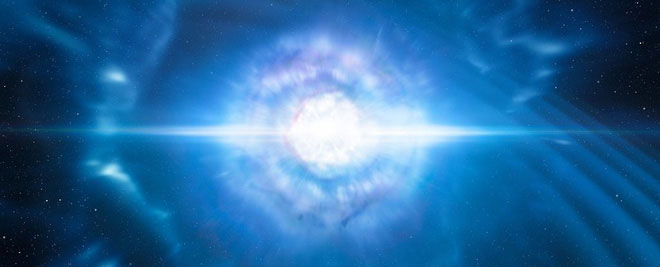Black holes have always been one of the biggest mysteries for space researchers. So far, the most accepted theory about the origin of a black hole is that of the collapse of a dead star. The process created an extremely heavy and dense area with tremendous gravity, making everything sucked in and unable to escape.
This is what we know about a cosmic black hole. But you know, it turns out the universe doesn’t have that kind of “hole”. In the process of studying space-time around black holes, scientists have also discovered another concept such as “white holes” – or cosmic white holes.
The concept of “white holes” was introduced in the 1970s with the opposite meaning of black holes. If a black hole is an area of extreme compression, the white hole is a massless place. Black holes are so heavy that they can attract bright images, and white holes prevent anything from passing through.
You can’t get out of a black hole, and neither can you get into a white hole. Black holes absorb matter and white holes “spit out” it. White holes are therefore very bright and energetic, releasing radiation into space at tremendous speeds.
This means that in theory a white hole is like stepping back in the life of a black hole.
 “Since the theory of relativity does not give the direction of time, if the process of formation of the black hole allows the laws of space-time and gravity, the white hole does the same”, – quoted Erik Curiel , a theoretical physicist at Stanford.
“Since the theory of relativity does not give the direction of time, if the process of formation of the black hole allows the laws of space-time and gravity, the white hole does the same”, – quoted Erik Curiel , a theoretical physicist at Stanford.
No one saw the white hole and the heated controversy
So far, no scientist has observed the white hole. Scientists also have a lot of controversy about it, including why it can’t exist.
The reason lies in the next simple but very big question, which is: How does the white hole (if it is real) form? With a black hole, we have reliable models of how it can form. But that doesn’t mean you can actually rewind a black hole to turn it into a white hole.
We would have to start from a singularity, go back in time so that a black hole instead of sucking up matter spits out everything – including light, until it returns to a star. This inadvertently violates the second law of thermodynamics, as it causes the so-called “coefficient of entropy” to decrease.
But even without this problem, let’s assume the white holes just exist. With mathematics, space-time contains a black hole in which there is no matter. If matter entered this area, then at that point the white hole would not exist.
This means that if a white hole exists, it can go away very quickly. If the universe had a white hole, it could have spewed out a giant mass of matter billions of years before Earth appeared.
 Black holes in the old days are just an unreliable theory
Black holes in the old days are just an unreliable theory
Theoretically, the existence of white holes has not received much support. However, it is important to know that the old black hole was just an unreliable theory, until science became more advanced in recent years.
In fact, there is an astronomical event that experts believe could be white holes, which are gamma explosions. These are the brightest and most energetic explosive events in the universe. In 10 seconds, the energy generated by the explosion was equivalent to that of the Sun in 10 billion years. In 2017, astronomers even saw such an explosion happen: the process of two neutron stars colliding.
There is also the theory that the Big Bang that created the universe is actually a supermassive white hole. This hypothesis has been tested mathematically, but it is of course purely theoretical. Because the Big Bang is actually a controversial theory.
Some believe that white holes are essentially end-of-life black holes. But black holes can exist parallel to the universe, so this hypothesis is unlikely to happen.
However, theoretical physical science is developing day by day. No one can claim that white holes don’t exist with 100% claims, so maybe one day we’ll know there are real white holes?


